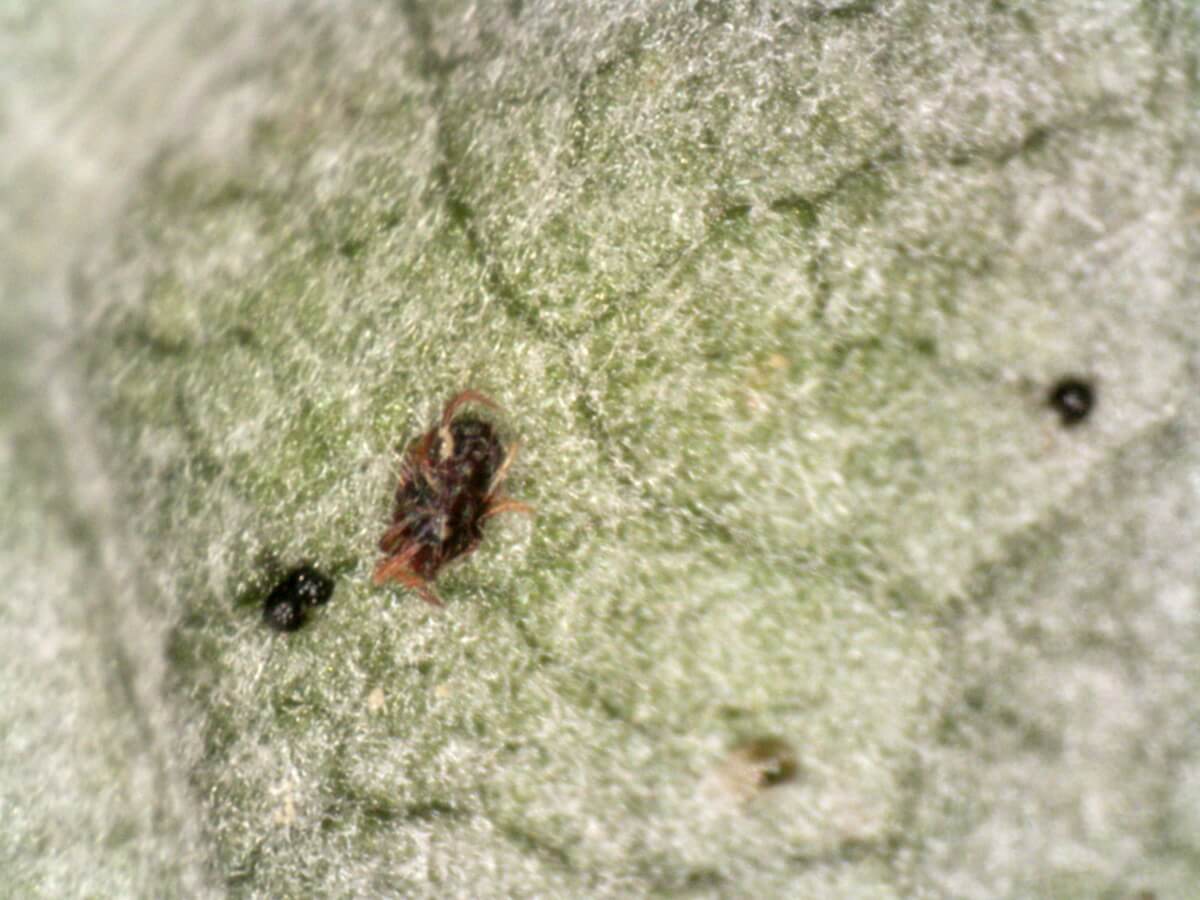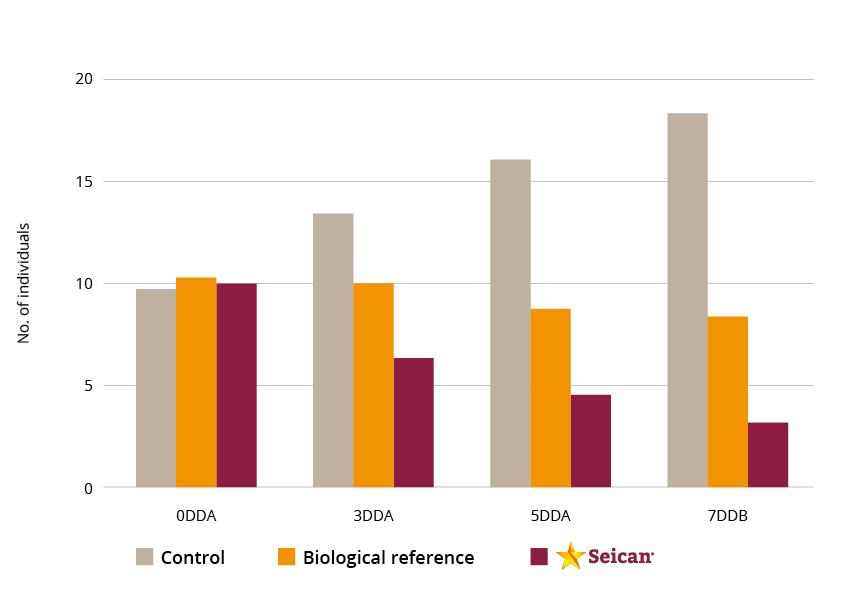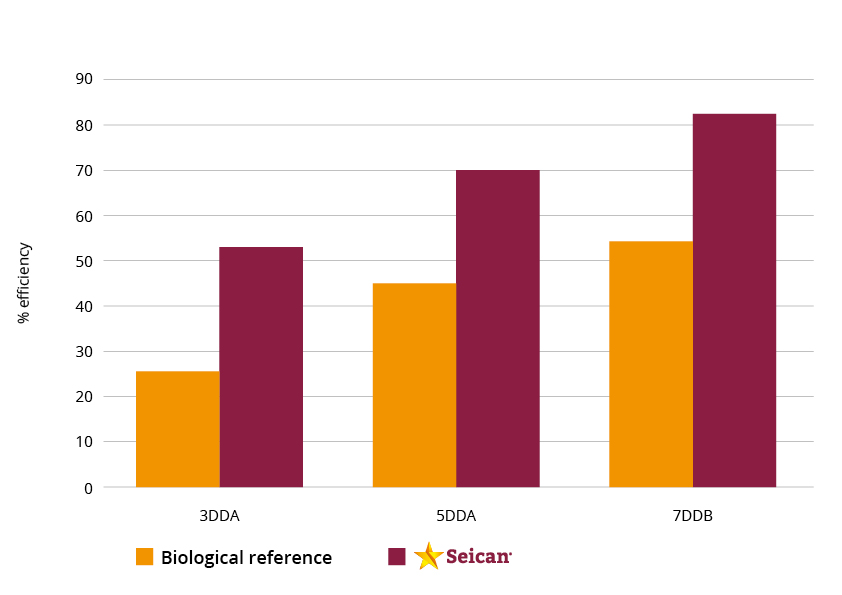Mite control on roses: strategy and recommendations

Mite population after Seican application.
Mite control becomes essential when this pest appears on crops. There are two factors that explain the importance of acting quickly, and both have to do with the speed at which they reproduce and the damage they can cause to crops. At the first visible symptoms of infestation, Seipasa recommends using Seican, a natural acaricide with a powerful shock effect for the biological control of mites.
Despite their tiny size, close monitoring will allow us to recognize the mites on the underside of the leaves. We can do it with a magnifying glass, or by placing a blank sheet of paper under the leaf and tapping it lightly until the mites fall to the surface.
The mites generate a silk web to move around the plant. When the level of infestation is very high, we can see the shape and volume of this web with the naked eye.
In either case, the reality is that the easiest way to recognize a mite attack is through the damage they cause to crops. The mites feed on sap. They pierce the leaves with their mouthparts and cause visible lesions in the epidermis. Damaged areas can be recognized by the appearance of grey or yellowish stippled spots that eventually become dehydrated. If the attack is more severe, the leaves may suffer deformations or curling, leading to plant defoliation.
As we pointed out in the article’s introduction, mite control is urgent due to the speed with which they reproduce, given that they have a very short cycle from egg hatching until they reach the adult stage.
Mites and life cycle
A female can lay more than 100 eggs, with a reproductive cycle that speeds up within a temperature range between 23 and 30ºC. The mites prefer warm and dry climates, so their development stops in conditions of high relative humidity, temperatures below 12ºC or above 40ºC. In regions with milder winters, generations occur throughout the year, or they hibernate until the following spring.
There are many species and subspecies of mites. Among the most common are Tetranychus urticae, better known as red spider mite or two-spotted spider mite. It can affect a wide variety of crops, both outdoors and in greenhouses.
Tetranychus urticae: control mechanisms
Seican is a Seipasa-designed botanical acaricide to control mite populations quickly and effectively. Graph 1 shows the results of the trial conducted in the Colombian town of Tenjo on Tetranychus urticae in the rose crop. The findings show Seican’s ability to reduce the spider mite population after the first application.
Graph 1. Average (number) of red spider mites (Tetranychus urticae) in the rose crop.
Within the same trial, graph 2 shows the Seican’s efficacy in controlling the pest, with an average that exceeds the biological reference efficacy in the two applications made and exceeds 80% one week after the second application.
Graph 2. Average (%) efficacy of Seican in the control of red spider mite (Tetranychus urticae) in rose crops.
To obtain these levels of efficacy in mite control, Seican acts by contact: it softens the exoskeleton and fosters its dehydration. In other words, the mite is exposed to loss of body fluids, resulting in dehydration and death.
Seican also acts on the eggs that give rise to larvae: it reduces their viability and stops their biological development. It is an ideal tool for inclusion in integrated pest management and resistance management strategies. In addition, Seican does not have a safety period, so it can be applied very close to harvest.
Beyond the application of mite control treatments to reduce and eliminate this pest, there are a series of highly recommended practices related to good crop health. These include maintaining the hygiene of the greenhouse and adjacent plots in perfect conditions from the moment the previous crop is finalised, as well as controlling the relative humidity and carrying out constant monitoring.



